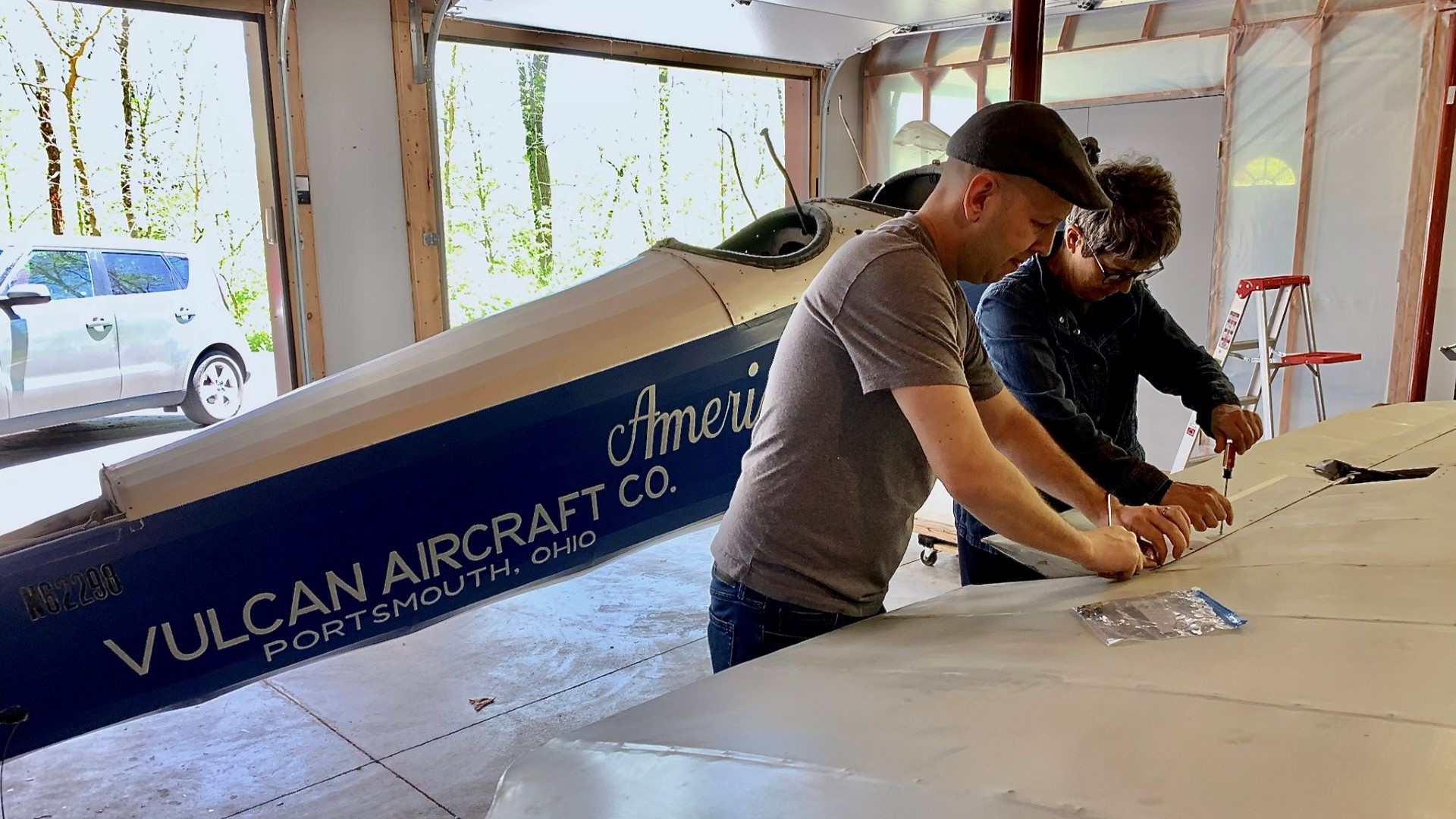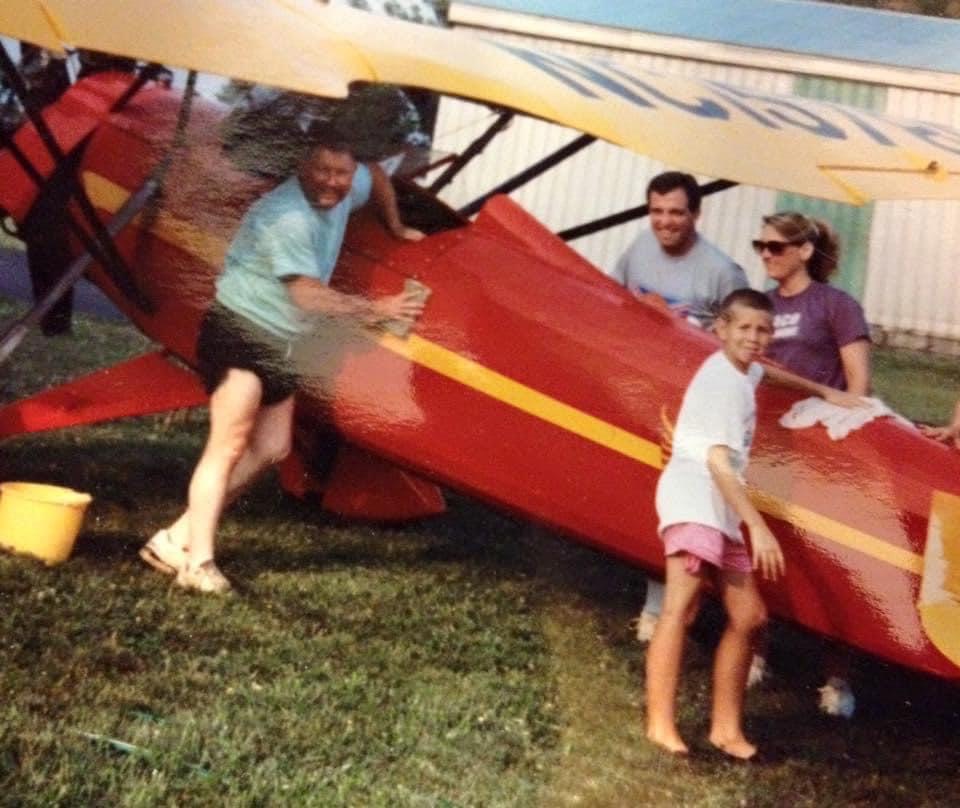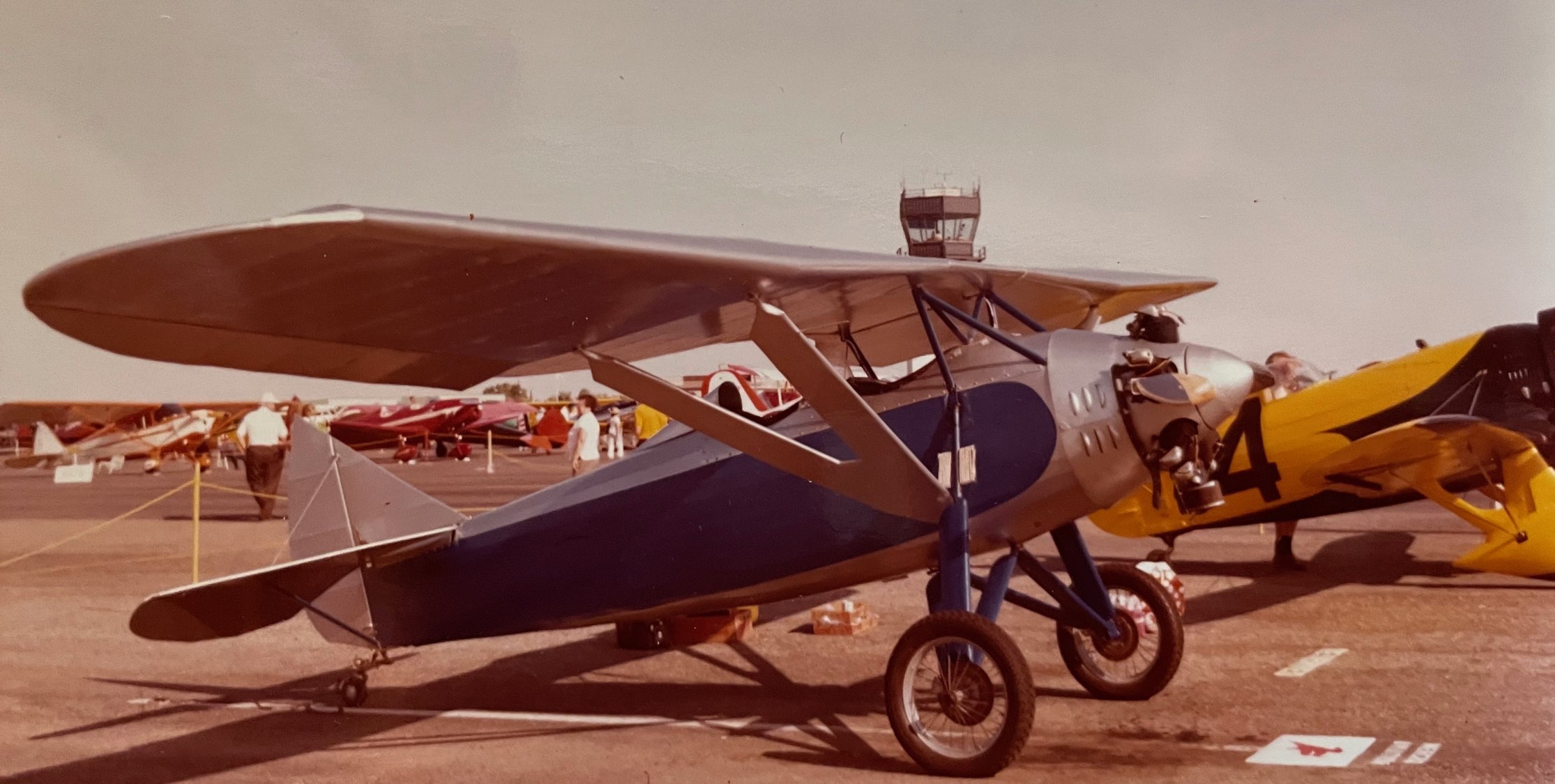Vulcan Mind Meld: In Which Nick Hurm Finds True Bliss Grooving with the Antique Airplane Geeks at Oshkosh
July 09, 2024 | by Jay Stowe
There are many proud aviation fanatics at GE Aerospace, those whose love of aviation started early and runs deep and wide. But Supply Chain Communications Leader Nick Hurm just might be the av geek leader of them all — at least when it comes to vintage aircraft.
To put it simply, Hurm is obsessed with airplanes.
His love affair with aviation began in earnest as a teenager when he started helping his stepfather, Jack Tiffany, and mother, Kate, restore antique airplanes.

The first plane that he helped work on was a 1935 open-cockpit Davis D-1-W monoplane. Hurm and a pilot friend flew it to the Experimental Aircraft Association’s annual gathering in Oshkosh, Wisconsin, now known as EAA AirVenture Oshkosh, with Hurm in the front seat gripping a flight chart he’d mounted on cardboard so it wouldn’t get shredded by the breeze.
Hurm was 13, and it was his first visit to the magic that is EAA AirVenture.
Since his first visit, more than 30 years ago, he’s flown or driven to Oshkosh most years, camping in the woods behind the scores of antique airplanes that owners fly in to the event.
“With the help of good friends, my family has brought multiple rare antiques to the show, including a 1930 Fairchild KR-21, a 1932 Pitcairn PA-18 autogiro, two Davis monoplanes, and a 1936 Aeronca LB,” Hurm says. “These restorations take thousands of hours of work. Oshkosh is the grand finale to show these award-winning restorations off to the world.”
But out of all of these antique airplanes, Hurm said he is most excited about his current restoration project — an ultra-rare Vulcan American Moth monoplane, one of only 10 ever made and the only known model still in existence.

Hurm’s Vulcan American Moth was made in Portsmouth, Ohio, in 1928 by the Vulcan Corporation, which made most of its money manufacturing shoe lasts and golf clubs.
Vulcan began producing aircraft less than a year after Charles Lindbergh made headlines around the world for his historic New York-to-Paris flight in the Spirit of St. Louis. The manufacturer intended to capitalize on the surge in demand of people wanting to learn to fly. The American Moth is a small, durable airplane, with an 18-foot-long fuselage and a wingspan of 30 feet. Its engine burned five gallons of fuel an hour, and it could fly more than 400 miles on a tank of gas. That made the airplane attractive to flying schools, as well as sport and business pilots. One American Moth was also very successful on the air racing circuit, winning the Los Angeles-to-Cincinnati air derby.
“It’s an all-Ohio airplane from 1928,” Hurm says. “The airplane was built just down the road from Peebles, where GE Aerospace’s engine test operations is located. The 60-horsepower LeBlond engine was built in Cincinnati and the propeller was built by Hartzell in Troy.”
Hurm’s passion for the Vulcan Moth stems from that first flight to Oshkosh in the red-and-yellow Davis D-1-W. When the Vulcan Aircraft Co. shuttered in 1929, its assets and designs were sold to Davis, a small automobile manufacturer in Richmond, Indiana, that was pivoting to airplanes. Davis took those designs and evolved them into the D-1-W. He calls the Vulcan project “my holy grail of airplanes.”
“I’ve spent most of my life tracking down the whereabouts or final endings of every Davis and Vulcan aircraft,” Hurm says. “I tracked down this project when I was 15 and had Jack call the owner. They had a great conversation, but he had no intention to sell the Moth.”
Fast-forward to 2022: Hurm got a call from a family friend and antique airplane restorer who told him the Vulcan plane was now for sale. After convincing the former owner’s widow that his intentions were honorable — “I told her that my intent is to get this thing flying again just like her husband did” — Hurm flew out to Hemet, California, purchased the plane, packed it into a 20-foot U-Haul moving van with his father-in-law, Paul McGinty, and drove it back to Cincinnati.

“Paul and I drove 2,466 miles in four days, including 1,110 miles from Amarillo, Texas, to Cincinnati,” Hurm said. “When we hit the Ohio state line it struck me that this was the first time that this aircraft was back in Ohio in 94 years.”
Hurm’s goal is to restore the 1928 Vulcan American Moth by 2028 so that he can celebrate the plane’s 100th birthday in Wisconsin with his fellow antique airplane enthusiasts.
“That is what Oshkosh is all about,” he says. “I can completely geek out there. You see the same people every year and you catch up and it’s a big family reunion.”
Since the trip, Hurm has spent time with family and friends carefully bringing the American Moth back to life. At the moment, his mother, who caught the aviation bug from Jack and became a licensed airframe mechanic, is covering the tail surfaces of the Moth with fabric. (Another little-known fact: “My mom was a vocational teacher near Dayton for 30 years,” he says. “One of her classes helped get the bill passed to put ‘Birthplace of Aviation’ on Ohio license plates.”) Hurm’s wife, Kate, has also pitched in to help restore the plane.
The restoration process has made Hurm take the GE Aerospace code of safety, quality, delivery, and costs (SQDC) to heart. “It’s nice hearing that message every day,” he says, “because I’m working on my airplane, asking, ‘Is what I’m doing safe? Is it the highest quality?’ This is an airplane we’re going to fly again. So I’m living the SQDC mantra.”

Hurm says his goal is to “keep this airplane flying 100 years from now.” Considering the number of hurdles he’s surmounted to get this far with the Vulcan, that doesn’t seem so far-fetched. In the meantime, he’s looking forward to another visit to Oshkosh this July.
“It doesn’t matter if it’s the 1920s or 2020s — people are still mesmerized by flight,” Hurm says. “GE Aerospace and the EAA AirVenture show have a lot of parallels. Both are centered around flight. Both are passionate about it. And both keep the legacy of flight alive and thriving.”





